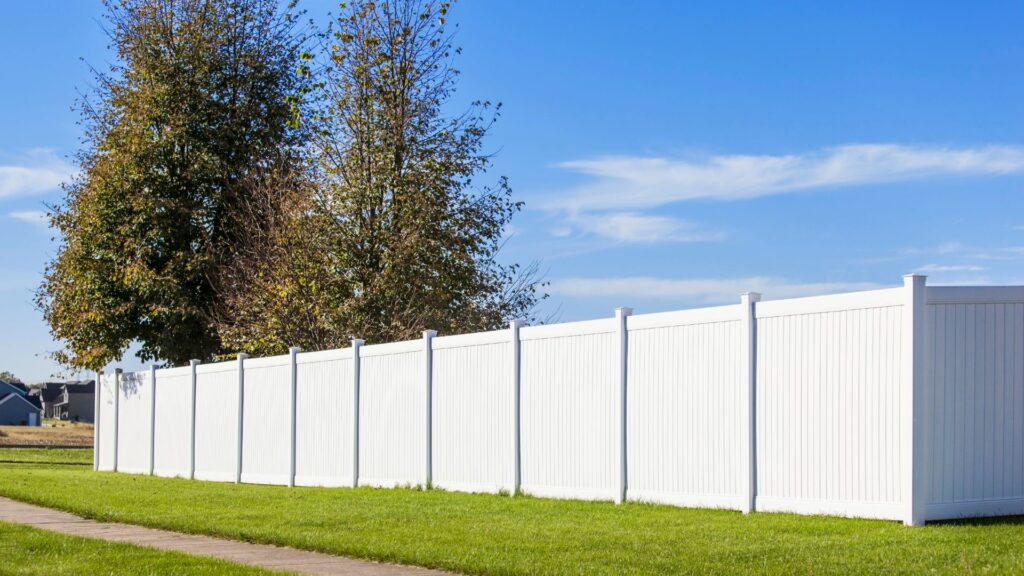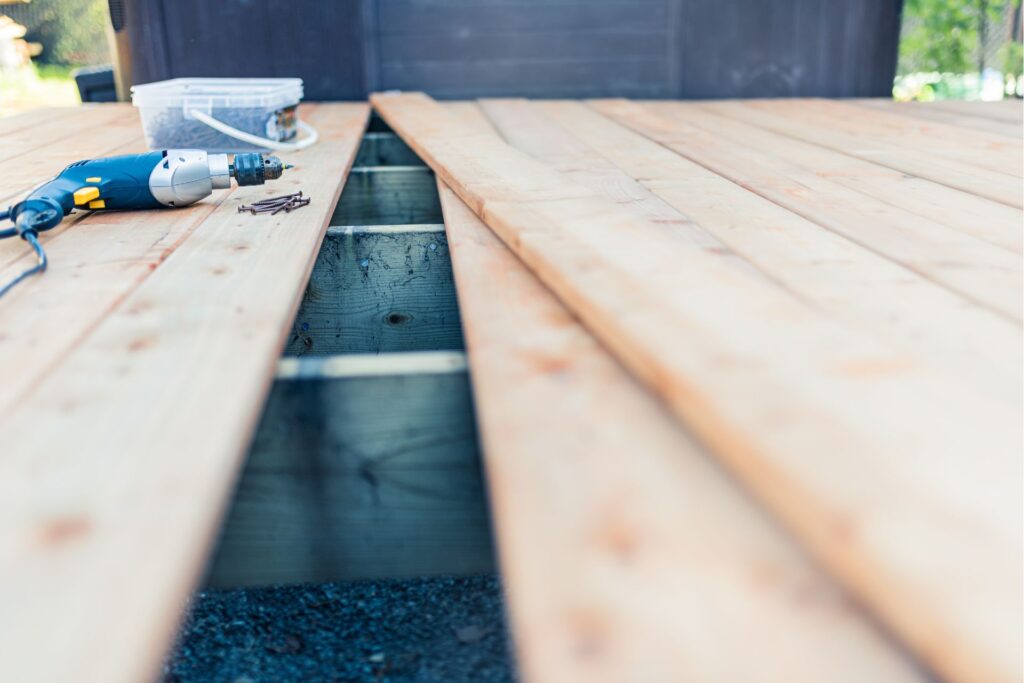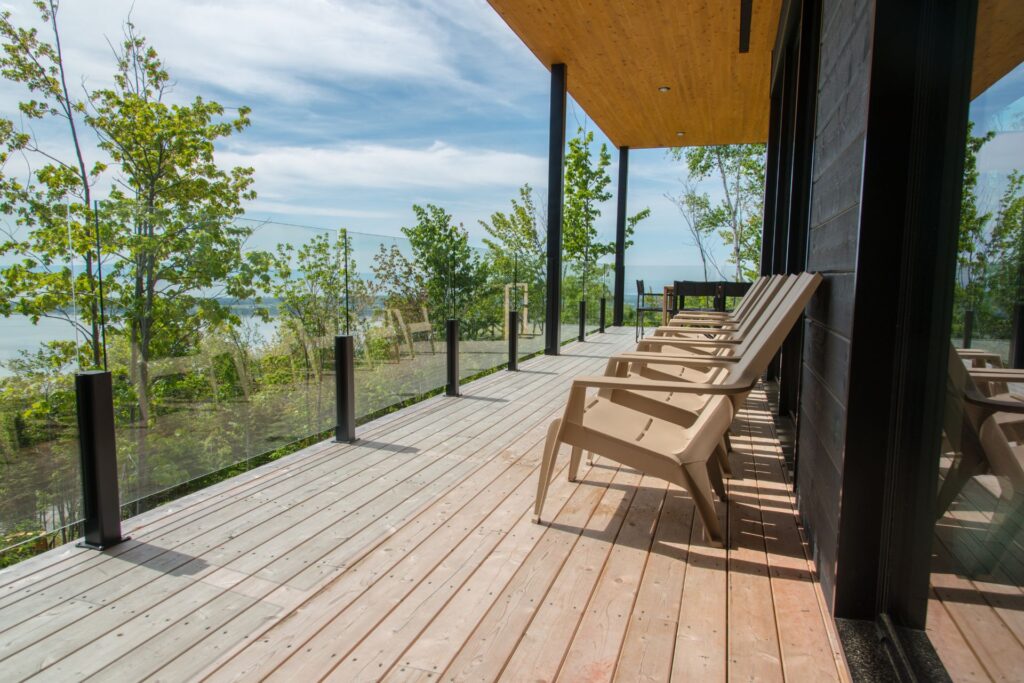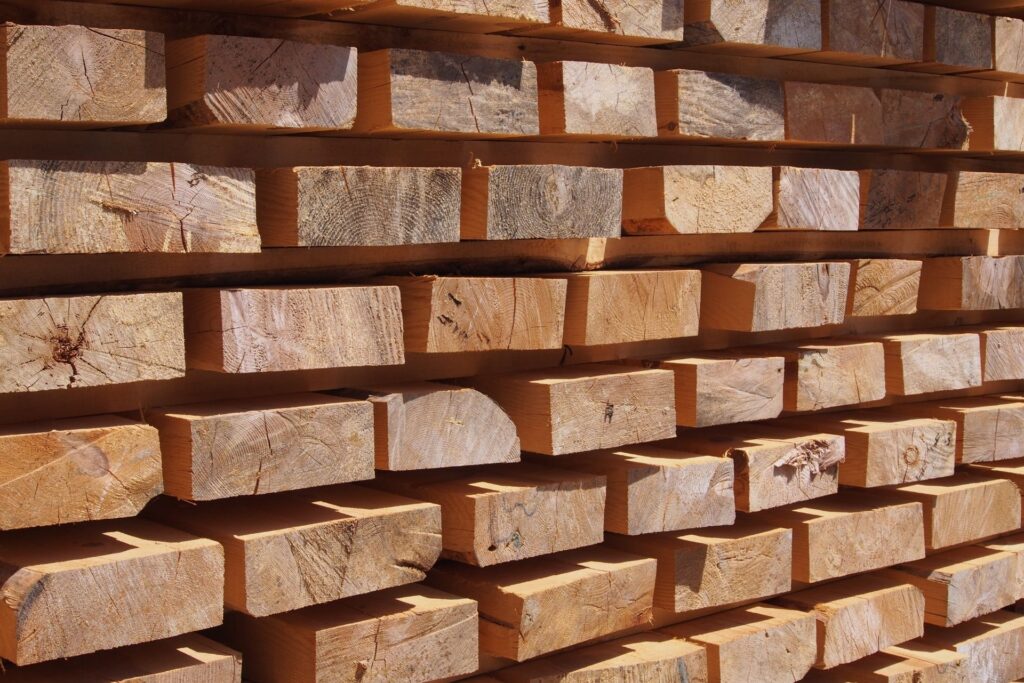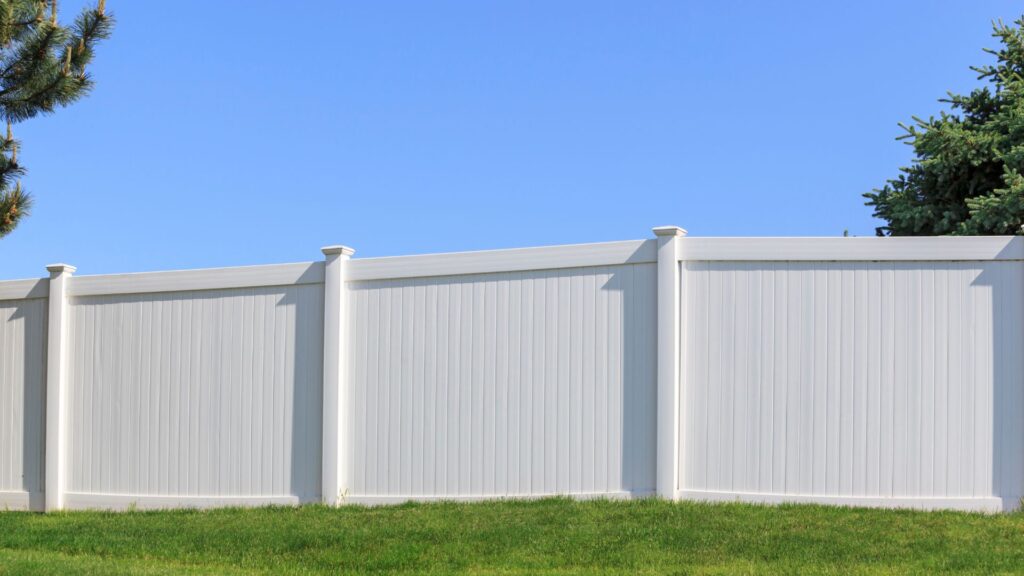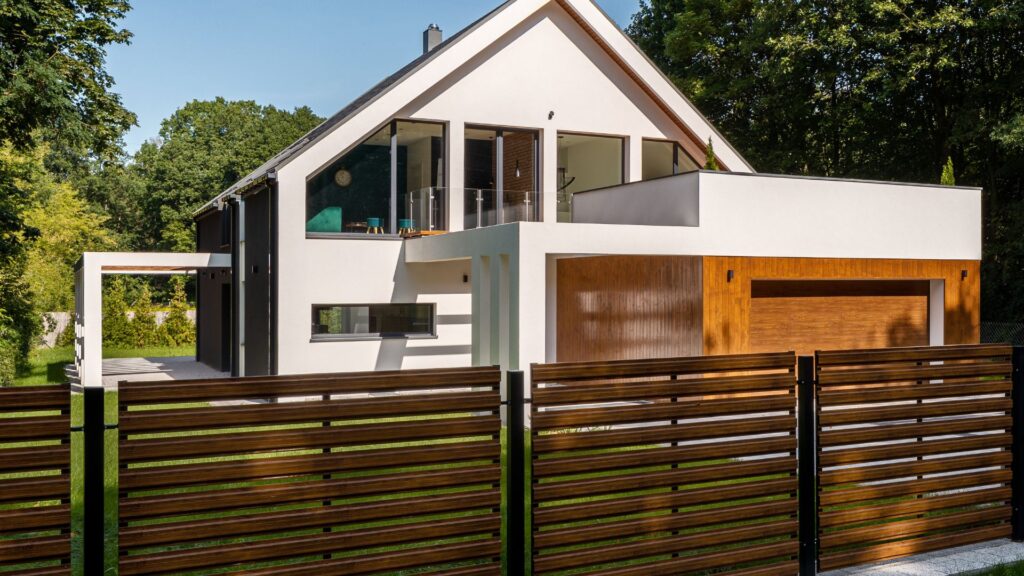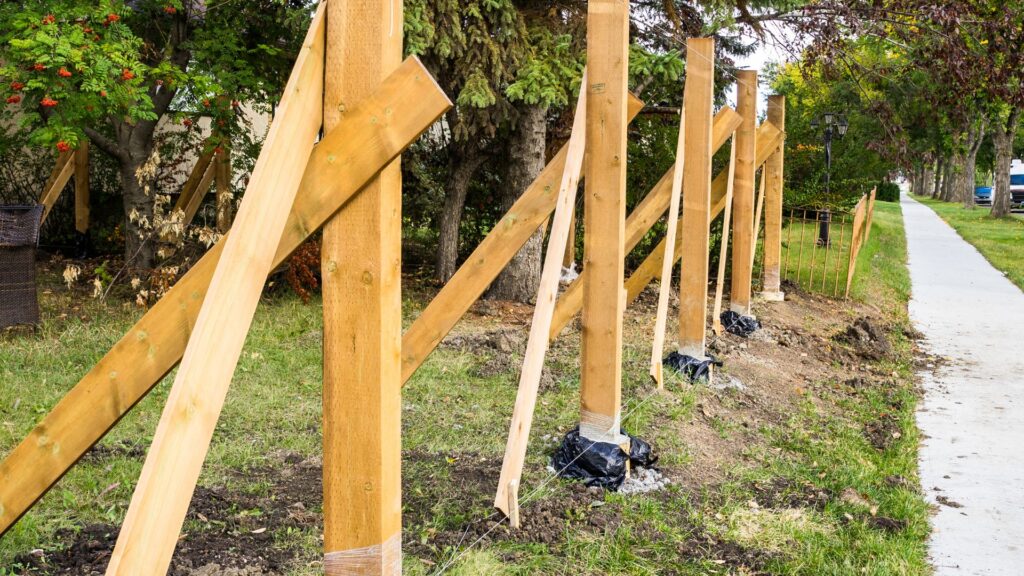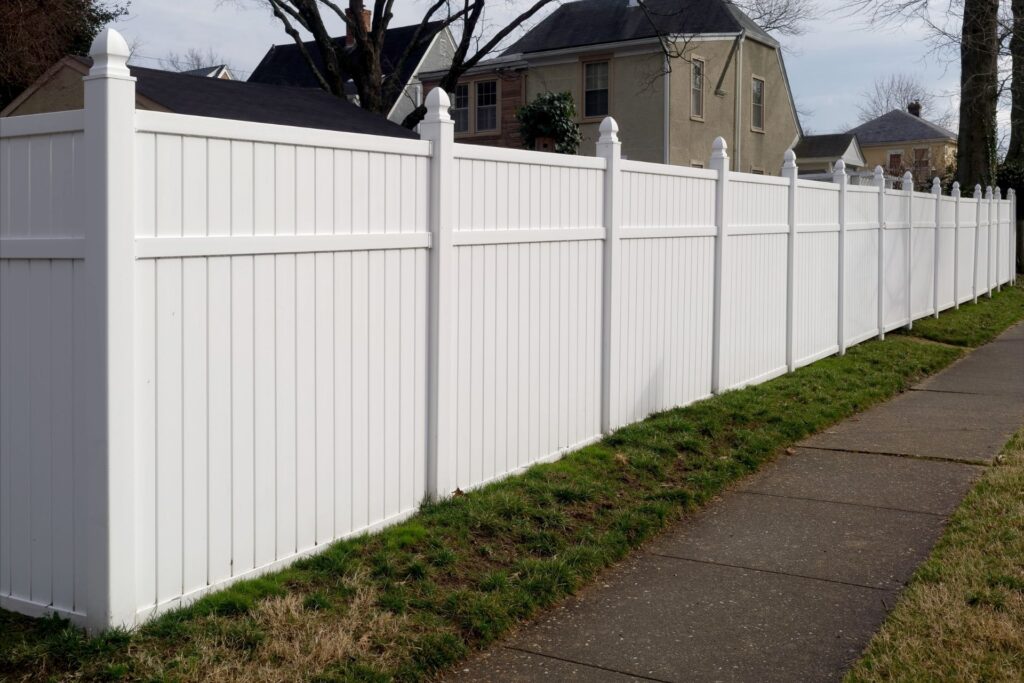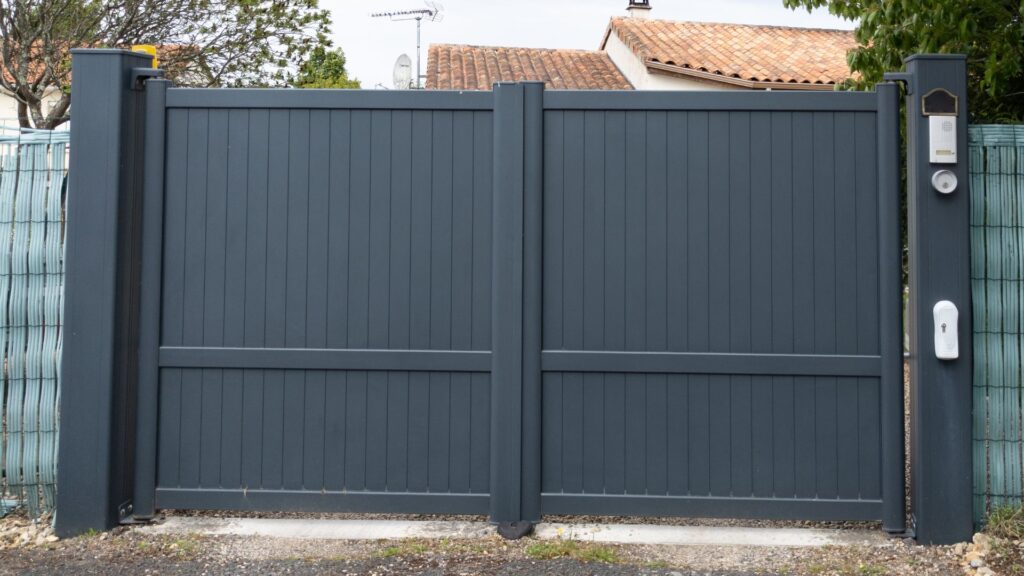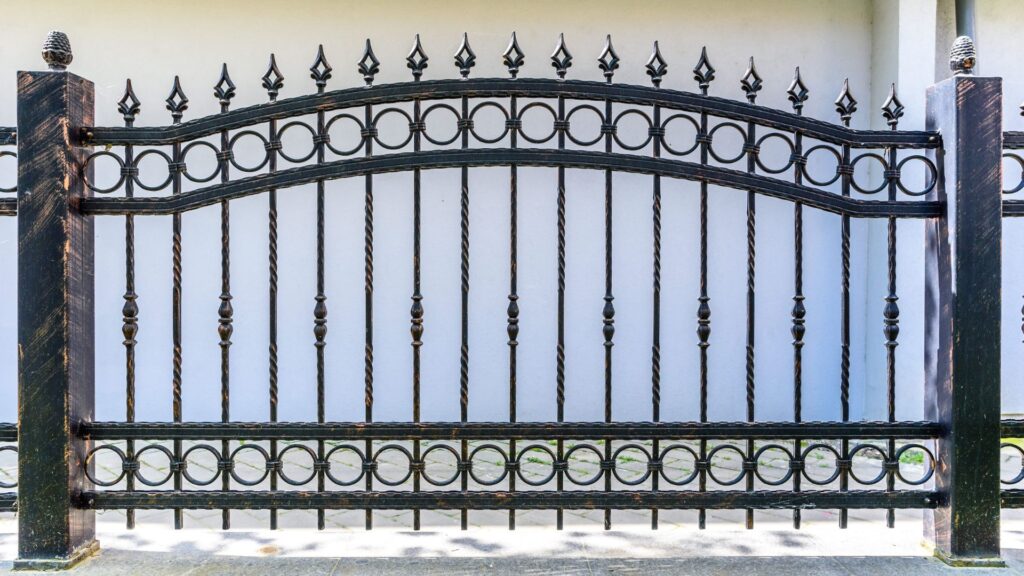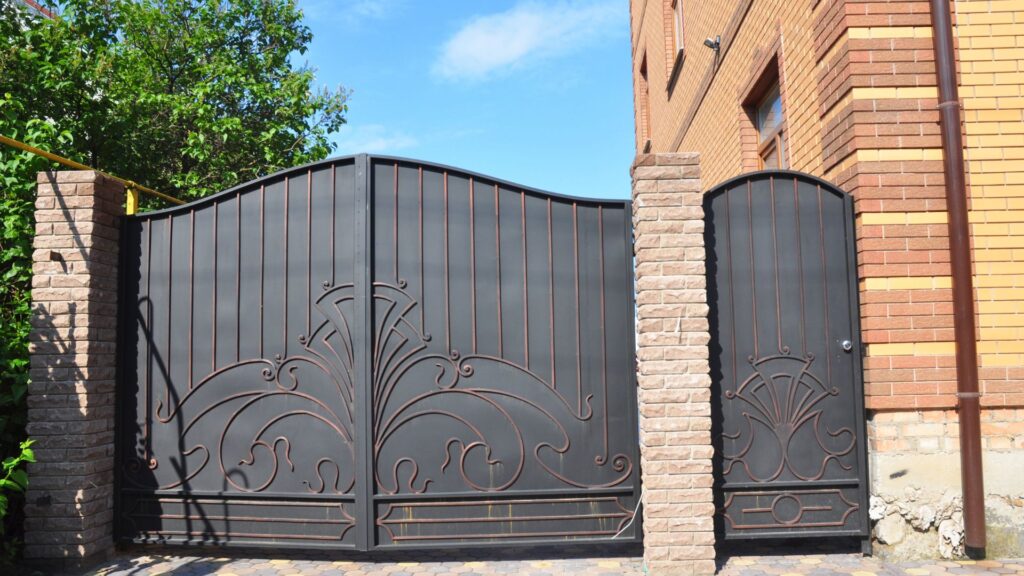Welcome to our comprehensive guide on NZ’s Unitary Plan height restrictions for fences. Whether you’re looking to build a new fence for added privacy, safety, or simply to enhance the look of your property, it’s essential to understand the local regulations that govern fence heights. The Auckland Unitary Plan sets clear guidelines on how high your fence can be, and these rules are in place to ensure safety, maintain neighborhood aesthetics, and prevent disputes with neighbors. In this article, we’ll break down everything you need to know about these restrictions, including why they exist, how they differ by location, and how you can ensure your fence complies with the law. Let’s dive in and explore the details to help you create a fence that not only looks great but also meets New Zealand’s legal standards.
Under New Zealand’s Unitary Plan, the maximum fence height is generally 1.2 meters for front boundaries and 2 meters for side and rear boundaries. These restrictions ensure safety, maintain neighborhood aesthetics, and prevent disputes. Higher fences may be allowed with resource consent, particularly in rural or special zones, but it’s essential to check local council rules to ensure compliance.
Table of Contents
What Is NZ’s Unitary Plan?
Definition and Purpose
The Auckland Unitary Plan (AUP) is the key legal framework that shapes the future of urban development and land use in Auckland, New Zealand. It serves as a comprehensive set of rules and guidelines governing how land can be used, modified, or developed, with the aim of achieving balanced and sustainable urban growth. The AUP plays a crucial role in managing Auckland’s rapid population expansion while ensuring that developments adhere to environmental standards and community expectations.
Essentially, the plan acts as a blueprint that defines what can be built, where, and under what conditions. It sets clear guidelines for a range of activities such as housing, commercial projects, industrial developments, and infrastructure, offering a transparent system that helps protect natural resources, maintain public safety, and promote well-being within the city. The Auckland Unitary Plan is also designed to support long-term economic growth, create more housing opportunities, and make sure that the region develops in an environmentally responsible way.
Why It Matters for Homeowners
For homeowners, the Auckland Unitary Plan directly impacts the scope of what they can and cannot do on their properties. Whether you’re thinking of making changes to your home or planning a major renovation, it’s vital to understand the regulations laid out in this plan. For instance, specific rules govern things like building heights, boundary lines, and even the types of fences you can install. These rules are in place to ensure that individual property modifications align with broader community standards, public safety, and environmental goals.
Let’s take the example of building a fence. You can’t just erect a fence of any height or material—there are clear guidelines that need to be followed. These regulations not only ensure that your project is safe and visually appropriate for the neighborhood but also help maintain harmony between homeowners and the local environment. Failing to adhere to these rules could result in penalties or the need to take down or modify your construction, making it important for property owners to stay informed. Understanding the Auckland Unitary Plan is essential for anyone looking to enhance their property while staying compliant with local laws and maintaining the character and safety of the surrounding area.
By ensuring that property modifications align with these broader plans, the Unitary Plan helps maintain a balance between urban development and environmental protection.

Fence Height Restrictions In NZ
When considering building or modifying a fence in New Zealand, it’s essential to understand the regulations governing fence heights. These rules are in place to ensure that fences contribute to the safety, aesthetics, and overall harmony of neighborhoods while also addressing privacy and functionality needs. Below, we’ll dive into the details of standard fence heights, the reasons behind these restrictions, and the exceptions that may apply.
Overview of Standard Fence Heights
The general rules for fence heights in New Zealand are outlined under the Unitary Plan, which sets standard height limits for various types of fences depending on their location on a property.
1. Front Boundary Fences: The height limit for fences built along the front boundary of a property is typically 1.2 meters (about 4 feet). This restriction ensures that front yards remain open and welcoming, preserving visibility and the overall aesthetic of the street.
2. Side and Rear Boundary Fences: For fences that run along the side or rear boundaries of a property, the standard height limit is usually 2 meters (about 6.5 feet). This higher limit allows for more privacy and security between neighboring properties without significantly affecting light or views.
3. Location Variations: These height restrictions can vary slightly depending on the area in which the property is located. For example, the rules may be different in residential, commercial, or rural zones. In rural areas, where properties are larger and more spread out, higher fences may be more acceptable, while in residential neighborhoods, the focus tends to be on maintaining open, friendly environments.
Why Fence Height Restrictions Exist
Fence height restrictions aren’t arbitrary; they serve several important purposes, ensuring that communities remain safe, visually appealing, and harmonious. Here’s why these regulations are in place:
1. Safety: One of the main reasons for limiting fence heights is to ensure safety, particularly when it comes to road visibility. Taller fences along front boundaries could obscure views of the road, creating potential hazards for drivers and pedestrians. Keeping front fences lower helps maintain clear sightlines, reducing the risk of accidents.
2. Aesthetic Appeal: The look and feel of a neighborhood are critical to its character. Overly tall or imposing fences can make a property seem enclosed and uninviting, detracting from the community’s overall appearance. By regulating fence heights, authorities aim to create a more pleasant and cohesive streetscape, where homes feel open and connected to their surroundings.
3. Neighbor Relations: Tall fences can lead to disputes between neighbors, particularly if they block natural sunlight or obstruct views. Keeping fence heights within prescribed limits helps prevent such conflicts by ensuring that no property owner unfairly diminishes the quality of life for their neighbors.
Exceptions to the Rule
While the rules outlined above apply in most cases, there are certain situations where higher fences may be allowed, provided that the property owner obtains the necessary permissions.
1. Resource Consent: In some instances, property owners may apply for resource consent to build a fence that exceeds the standard height limits. This is often the case for fences designed to serve a specific purpose, such as noise barriers along busy roads or privacy fences in densely populated areas. Each application is assessed on a case-by-case basis, taking into account factors like the fence’s impact on the neighborhood and the needs of the property owner.
2. Privacy Concerns: In situations where privacy is a significant concern, such as properties adjacent to public spaces or busy roads, taller fences may be approved. The local council will evaluate whether the proposed fence height is justified and whether it will negatively affect the surrounding properties.
In conclusion, fence height restrictions in New Zealand are designed to balance safety, aesthetics, and neighborly relations. By adhering to these rules, property owners can contribute to a safer, more attractive, and cohesive community. However, for those needing higher fences for privacy or other reasons, resource consent is an available pathway to ensure that all needs are fairly considered.
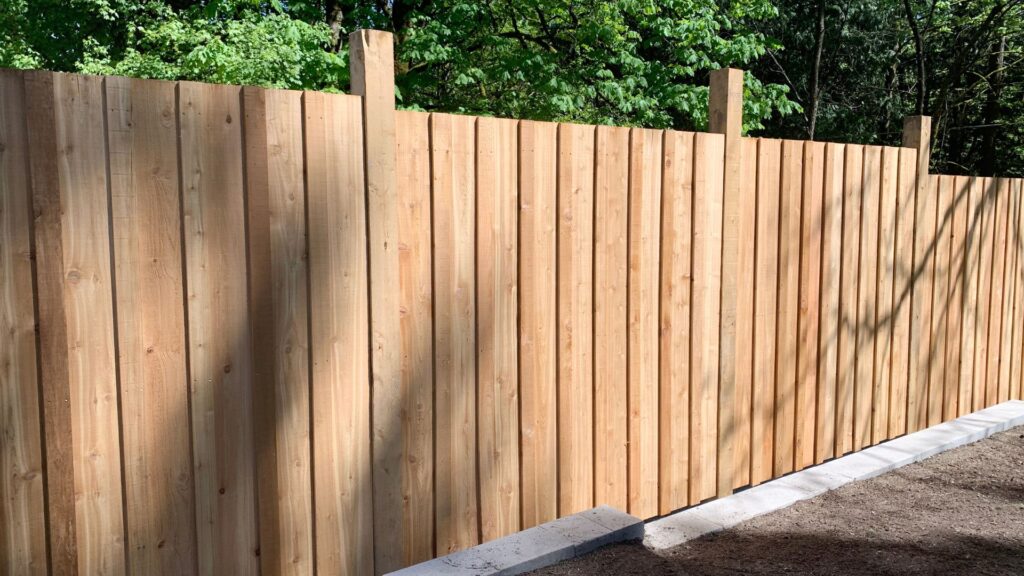
Specific Height Regulations By Location
Fence height regulations vary significantly based on the location of the property, taking into account the unique characteristics and needs of each area. These rules help maintain the balance between privacy, safety, and aesthetic appeal. Let’s break down how these regulations differ across various locations:
Urban Residential Areas
In densely populated urban areas, such as Auckland’s central suburbs, fence height regulations are typically stricter. This is to ensure that while property owners can enjoy privacy, there’s also a sense of openness and community.
In most urban areas, the front yard fence height is limited to around 1.2 meters. This regulation helps prevent the street from feeling overly enclosed and maintains a welcoming atmosphere for pedestrians. Taller fences in front yards can create a sense of isolation and disrupt the visual flow of a neighborhood. Side and rear yard fences, however, may be allowed to reach heights of up to 2 meters, as these areas are less visible from the street and play a greater role in providing privacy to residents.
The emphasis in urban settings is on finding a balance between individual privacy and neighborhood cohesion. Low front yard fences promote interaction between neighbors and create a friendlier streetscape, while higher fences in private spaces still provide the necessary seclusion for homeowners.
Rural and Semi-Rural Areas
In contrast to urban zones, rural and semi-rural areas have much more relaxed fence height regulations. Properties in these areas are generally larger, with fewer immediate neighbors, so the visual impact of higher fences is less of a concern.
It’s common to see fences in rural areas exceeding the 2-meter height limit often imposed in cities. In fact, fences in these zones can be considerably higher, especially when they serve functional purposes like containing livestock or protecting crops. The primary focus in rural fencing is practicality rather than aesthetics, which is why regulations are more lenient. The vast open spaces and larger property sizes reduce the need for strict oversight on how high a fence can be.
However, even in rural areas, certain restrictions may apply depending on local council bylaws or specific land use conditions. For example, a property near a protected natural area or a road may still have fence height limitations to ensure safety or preserve the local landscape.
Special Zones: Heritage, Coastal, and Business Areas
Some areas are subject to much stricter regulations due to their special status, such as heritage, coastal, or business zones. These areas often have unique characteristics that local councils aim to preserve, and fence height restrictions are one tool used to achieve that.
In heritage zones, for instance, fence height rules are put in place to maintain the historical character of the neighborhood. Tall, modern fences can detract from the architectural style of older buildings and disrupt the aesthetic integrity of the area. In these locations, lower fences are often required, and materials or styles may need to adhere to specific guidelines that complement the heritage nature of the environment.
Coastal areas, on the other hand, may have fence height restrictions aimed at preserving natural views and minimizing environmental impact. Coastal properties are often highly valued for their scenic outlooks, and tall fences could obstruct public or private enjoyment of these views. Local authorities may impose height limits to ensure that coastal aesthetics and access to natural light are maintained.
In business districts, fence height regulations typically focus on safety and ensuring that the area remains accessible and visible. Fences here might be subject to specific requirements to align with the commercial nature of the area, often needing to be low or see-through to enhance visibility for security purposes.
Understanding and adhering to local fence height regulations is essential, whether you’re building in an urban residential area, rural zone, or special location such as a heritage or coastal site. By following these rules, property owners not only ensure compliance but also contribute to the overall harmony, safety, and visual appeal of their community. Always check with your local council for the specific regulations that apply to your area before constructing or modifying a fence.
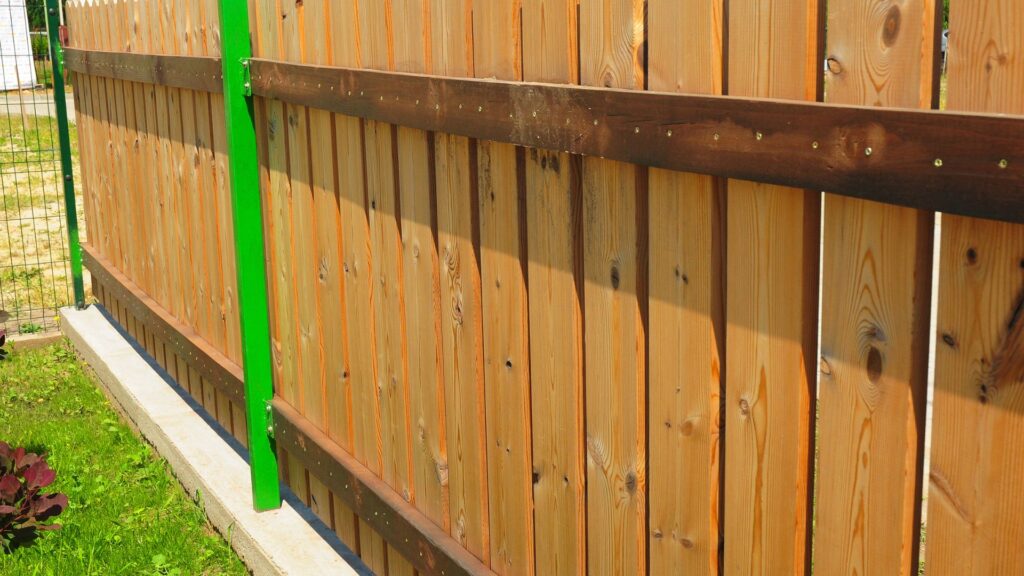
Navigating Resource Consents For Higher Fences
If you’re planning to build a higher-than-usual fence on your property, understanding the resource consent process is crucial to ensure your project complies with local regulations. This guide will help you navigate the ins and outs of resource consent, focusing specifically on when it’s required, how to apply, and common challenges you might face.
What is Resource Consent?
Resource consent is a formal permission granted by your local council, allowing you to carry out activities that may otherwise not be permitted under local zoning laws or district plans. For fences, resource consent is typically required when your planned structure exceeds the standard height limits, or if it’s located in a specially regulated zone, such as a heritage area or close to a public landmark.
For instance, if you’re planning to build a fence that stands over 2 meters in height, or if your property is near a historic building, you will likely need to apply for resource consent. This is because higher fences can impact visual aesthetics, block sunlight, or potentially interfere with neighbors’ rights, and councils are tasked with balancing individual property rights with community well-being.
How to Apply for Resource Consent
Navigating the resource consent application process may seem daunting, but breaking it down into manageable steps can help simplify things:
1. Determine If You Need Consent: Start by reviewing your local council’s regulations. Most district plans outline the specific height limits for fences and detail any special zones where consent is mandatory. Contact your local council if you’re unsure whether your project qualifies.
2. Prepare Your Application: Gather all necessary documents for your resource consent application. These typically include:
- Detailed plans and drawings of your proposed fence, showing height, materials, and location on your property.
- Supporting evidence such as photographs of the site, and a written explanation of why you need a higher fence.
- Neighbor Approvals, if relevant, to show that those living near your property do not object to the project. While not always required, it can significantly strengthen your application if your neighbors are on board.
3. Submit to the Council: Submit your completed application to the local council. At this stage, be prepared to pay a fee, which varies depending on your location and the complexity of the application.
4. Council Review: After submission, the council will review your application, considering factors such as visual impact, neighborhood harmony, and whether the fence complies with broader town planning goals. They may contact you for additional information or arrange a site visit.
5. Await Decision: Once all information is gathered, the council will issue its decision. This can take several weeks to months depending on the workload and any complications.
Common Challenges in the Resource Consent Process
Even with a well-prepared application, there are potential hurdles you might encounter when applying for resource consent. Understanding these challenges upfront can help you prepare and avoid unnecessary delays.
1. Objections from Neighbors: Neighbors can raise objections to your higher fence, often due to concerns about how it will affect their sunlight, views, or property value. To mitigate this, it’s a good idea to consult with your neighbors early in the process. By explaining your project and addressing any concerns, you can often secure their support, which will make your application more favorable to the council.
2. Delays in Council Approval: Local councils often face high workloads, leading to delays in processing resource consent applications. To minimize delays, ensure that your application is thorough and complete from the outset. Missing documents or vague plans can result in requests for further information, prolonging the review process. If you’re unsure about any aspect of the application, consulting a professional such as a planner or lawyer can help.
3. Complex Zoning Restrictions: Some areas have specific zoning regulations that add complexity to your application. For example, properties in heritage zones or near protected natural areas may face stricter scrutiny. In such cases, it might be necessary to work with a professional consultant who understands the nuances of local zoning laws.
By taking these challenges into account and addressing them early, you can increase the likelihood of a successful and timely approval for your higher fence project.
Building a fence that exceeds local height restrictions or is located in a sensitive area often requires navigating the resource consent process. While the steps may seem complex, proper preparation can make a world of difference. Start by ensuring your application is well-supported with clear plans, gather any necessary approvals from neighbors, and stay in close communication with your local council. If challenges arise, don’t hesitate to seek professional advice. This proactive approach will not only help you avoid delays but also increase the chance of a successful outcome for your project.
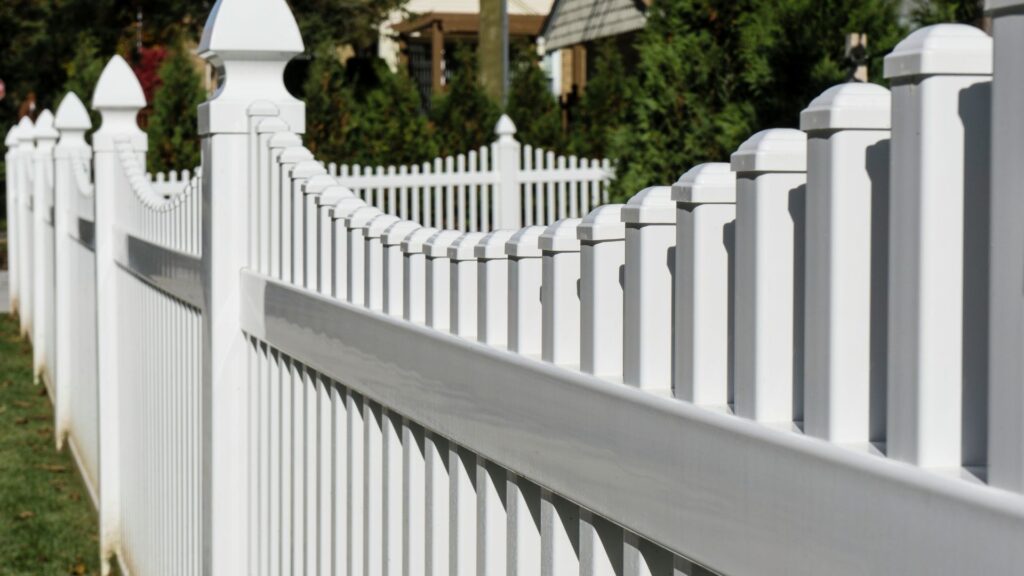
Potential Consequences Of Non-Compliance
Building a fence without adhering to the guidelines of the Unitary Plan can lead to several negative outcomes that homeowners should be aware of. Below, we explore some of the most common consequences of non-compliance and how to avoid them.
Fines and Penalties
One of the most immediate risks of not complying with local regulations when constructing a fence is the possibility of facing fines or penalties. Authorities can issue notices for fences that exceed height limits, encroach on neighboring properties, or otherwise violate zoning laws. Non-compliant fences may result in:
- Costly fines: Homeowners could face steep fines if their fence is found to be in violation of the Unitary Plan. The fines may vary depending on the extent of the non-compliance, but they can be significant enough to put a financial strain on your project.
- Forced deconstruction: In some cases, the local council may issue a deconstruction order, requiring you to dismantle part or all of your fence if it doesn’t meet the required standards. This can result in both financial loss and the inconvenience of having to start the process over.
- Property value concerns: Non-compliant fences can also affect the value of your property, as potential buyers may be wary of purchasing a home that has unresolved legal issues or the potential for future fines.
For example, if your fence is built too high without the necessary consent, you could face not only a deconstruction order but also additional costs for modifying the structure to comply with local laws. This can add a significant layer of stress and delay to your project, which could have been avoided by seeking approval upfront.
Disputes with Neighbors
Another major concern with non-compliance is the potential for disputes with neighbors. Building a fence without following local regulations or consulting with those around you can lead to several types of conflicts:
- Blocked views: If your fence is too tall or obstructs your neighbor’s view, it can lead to complaints or legal action. Neighbors may feel that their property value or enjoyment of their home has been diminished due to the loss of scenery.
- Loss of sunlight: A high fence may block sunlight from entering a neighbor’s property, which can be particularly problematic in smaller yards or urban areas where natural light is highly valued. This issue could lead to disputes that may escalate if not handled properly.
- Aesthetic disagreements: Fences that are out of sync with the aesthetic of the neighborhood or clash with a neighbor’s style preferences can also lead to tension. While this may seem like a minor issue, it can quickly snowball into larger conflicts, especially if the fence is deemed non-compliant.
Resolving these disputes is essential to maintaining a peaceful living environment. Homeowners should consider the following strategies to address issues with neighbors:
- Open communication: Before building a fence, it’s important to have an open discussion with your neighbors. This can help set expectations and avoid surprises. Talking through the project with them may lead to a compromise that satisfies both parties.
- Mediation services: If disagreements arise, consider using mediation services to resolve the conflict in a fair and neutral manner. Many local councils offer these services to help neighbors come to a resolution without escalating the issue to a formal legal dispute.
By adhering to the Unitary Plan and maintaining open communication with neighbors, homeowners can avoid fines, penalties, and unnecessary conflict, ensuring a smoother fence-building process that benefits all parties involved.

How To Build A Compliant Fence
Building a fence is more than just setting posts and panels; it requires thoughtful planning, understanding local regulations, and choosing materials that suit both your aesthetic preferences and legal requirements. Here’s a step-by-step guide on how to build a fence that complies with council rules and enhances your property’s appeal.
Planning and Research
The first step in building a compliant fence is conducting thorough research and planning your project in advance. Each region or city, such as Auckland, may have specific regulations regarding fence height, material restrictions, and boundary rules. Understanding these early on can save you from potential fines or having to alter your fence after it’s built.
Start by visiting your local council’s website, such as the Auckland Council’s website, to check the Unitary Plan. This plan outlines the specific rules and restrictions that apply to your area. For instance, there may be regulations about fence height, especially if you live in a residential zone or near a public space. It’s also essential to check if your property is subject to any overlays, such as heritage or environmental restrictions, which could further impact what you can build.
You’ll also want to understand any exceptions to the general rules. Some areas may allow taller fences for added privacy or noise reduction, but this often requires additional permits. To avoid surprises, it’s a good idea to contact your local council directly for clarification on anything that’s unclear.
Example:
“Before building, research the Auckland Council’s rules on fencing in your specific area. This will ensure you stay within the legal height limits and avoid penalties or having to dismantle your fence. Be mindful of overlays and exceptions, which might affect what you’re allowed to build.”
Consulting Professionals
Even with extensive research, local building regulations can be complex. That’s why consulting with professionals is often a smart move. Hiring a licensed builder or architect can help you design a fence that meets both your practical needs and legal requirements. These professionals are familiar with local rules and can offer invaluable advice on how to navigate them.
Additionally, consulting a legal expert may be necessary in cases where property boundaries or easements come into play. A legal professional can ensure you’re not accidentally building on your neighbor’s property or violating any shared boundary agreements.
Investing in professional help may feel like an extra cost, but it could save you from expensive fixes later on. A well-designed and compliant fence not only keeps you within legal boundaries but also adds value to your property by avoiding future disputes or the need for modifications.
Example:
“If you’re unsure about the regulations in your area, consulting a licensed builder or legal professional is a good idea. They can help design a fence that complies with local laws and ensure you’re not accidentally crossing property lines or exceeding height limits.”
Materials and Aesthetic Considerations
The materials you choose for your fence not only affect its durability and appearance but can also impact its compliance with local laws. Common materials include wood, metal, and brick, each offering unique advantages in terms of privacy, aesthetics, and maintenance.
For instance, wooden fences are a popular choice for residential properties because they provide a natural look and offer flexibility in design. However, wood may have height restrictions due to safety concerns, especially if it’s part of a front yard fence. Metal fences, while often more durable, may also be subject to regulations depending on their design and location, as open designs like wrought iron might be treated differently than solid barriers. Brick fences are sturdy and provide excellent privacy, but they can be subject to stricter rules due to their permanence and the potential impact on neighboring properties.
When choosing your materials, it’s important to balance aesthetics with compliance. While a taller fence may offer more privacy, exceeding height limits can lead to legal trouble. Always check with your council about specific material restrictions and any height regulations associated with them.
Example:
“The materials you choose can affect both the look and compliance of your fence. A wooden fence offers a natural appearance but may have height restrictions. Metal or brick may be sturdier but could require additional permits depending on your local regulations.”
In summary, building a compliant fence requires careful planning, professional advice, and thoughtful material selection. By doing your research, consulting experts, and adhering to local regulations, you can create a fence that enhances your property without running into legal issues. Whether it’s for privacy, security, or simply aesthetics, a well-planned fence project will provide long-term benefits while keeping you on the right side of the law.

FAQs: About NZ’s Unitary Plan Height Restrictions For Fences
What is the maximum height allowed for fences in New Zealand under the Unitary Plan?
The maximum height generally allowed for fences under the Unitary Plan is 1.2 meters for front boundaries and 2 meters for side and rear boundaries. Higher fences may require resource consent.
Do I need council approval to build a fence on my property?
You don’t need council approval for fences that comply with the height restrictions set by the Unitary Plan. However, if you want to build a fence taller than the allowed height, you will need to apply for resource consent from your local council.
Can I build a fence higher than 2 meters?
Yes, but you will need to apply for resource consent if the fence exceeds 2 meters. The council will assess the impact of the higher fence on neighbors, aesthetics, and safety before granting approval.
Are there different height restrictions for fences in rural areas?
Yes, rural and semi-rural areas often have more relaxed height restrictions due to the larger property sizes and fewer nearby homes. However, it’s still essential to check the specific rules for your zoning area.
What happens if I build a fence that doesn’t comply with the height restrictions?
Building a non-compliant fence without the necessary approvals can result in fines, and you may be required to lower or remove the fence. In some cases, it can also lead to disputes with neighbors or legal challenges.
How do I check the height restrictions for my specific property?
You can check the height restrictions by visiting the Auckland Council’s or by contacting your local council to confirm the rules for your property.
What should I do if my neighbor’s fence violates height restrictions?
If your neighbor’s fence is too tall and does not comply with the Unitary Plan, you can discuss the matter with them directly. If the issue persists, you may need to contact your local council to address the non-compliance.
Can I negotiate with my neighbor to build a higher fence?
Yes, you can negotiate with your neighbor to build a higher fence, especially if both parties benefit from it (e.g., increased privacy). However, you will still need to obtain resource consent if the fence exceeds the allowed height.
What materials are commonly used for fences in New Zealand, and do they affect height restrictions?
Common fence materials include wood, metal, and brick. While the material itself doesn’t affect the height restrictions, certain types of fences (e.g., solid brick walls) may have additional considerations for safety or aesthetic purposes.
How long does it take to get resource consent for a higher fence?
The time frame for resource consent approval can vary depending on the complexity of the application and whether there are any objections. It typically takes between 20 to 60 working days, but it’s advisable to check with your local council for more accurate timelines.
Conclusion
In conclusion, understanding and complying with New Zealand’s Unitary Plan height restrictions for fences is crucial for maintaining a harmonious neighborhood and avoiding potential legal issues. Taking the time to thoroughly research and plan your fence project ensures that it aligns with local regulations while also considering the aesthetic and practical needs of your property. Seeking professional advice when necessary can help you navigate any complexities, and maintaining open communication with neighbors can prevent disputes. For more tailored guidance or to clarify any uncertainties, it’s always a good idea to reach out to Auckland Council or consult with a local expert.
About the Author:
Mike Veail is a recognized digital marketing expert with over 6 years of experience in helping tradespeople and small businesses thrive online. A former quantity surveyor, Mike combines deep industry knowledge with hands-on expertise in SEO and Google Ads. His marketing strategies are tailored to the specific needs of the trades sector, helping businesses increase visibility and generate more leads through proven, ethical methods.
Mike has successfully partnered with numerous companies, establishing a track record of delivering measurable results. His work has been featured across various platforms that showcase his expertise in lead generation and online marketing for the trades sector.
Learn more about Mike's experience and services at https://theleadguy.online or follow him on social media:

